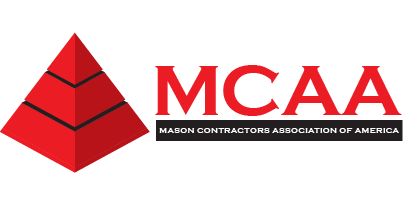Education
The Chapter believes in quality continuing education for its members and the design community. It currently provides a variety of options for Above-grade Code-based Masonry Training developed by its members to illustrate code-based installation and industry best practices including:
- Installation Bulletins.
- Videos
- Sample specifications.
- AIA-approved presentations that Chapter members will provide live or online for designers. Contact the Chapter to schedule a presentation for your office.
- Masonry Training Day. Each February, a day-long training day is provided to educate our masons with a code-based working knowledge of masonry construction and restoration, so they understand not only what to do, but why architects and engineers were asking them to do it. Masons that attend the course are provided a certificate of completion. This training is open to designers, inspectors, and building officials as well and often carries AIA LU/HSW credits. Contact the Chapter for the next training day information.
- Masonry Master Class. This five-week course for architects, engineers and contractors is AIA-approved and offers up to 7.5 LU/HSW credits. This course supplements the Chapter’s mason training program. There are no calculations. The purpose of the class is to discuss provisions within the building code that can both reduce the cost of masonry labor, improve the structural performance of our buildings, and communicate masonry advances and best practices to structural engineers. It will identify masonry detailing problems from past projects as identified by mason contractors to avoid confusion and conflict during construction and to offer code-based solutions. Through this class, we can help make designing easier and lead to better masonry structures at a lower cost. Each class is hosted by Chapter members who answer constructability questions. This course is offered in the spring; contact the chapter for the next class.
Topics include for the five classes include:
- Structural design
- Detailing
- Movement joints for crack control
- Masonry specifications
- Field inspection
